10+ low-maintenance plants for the office space
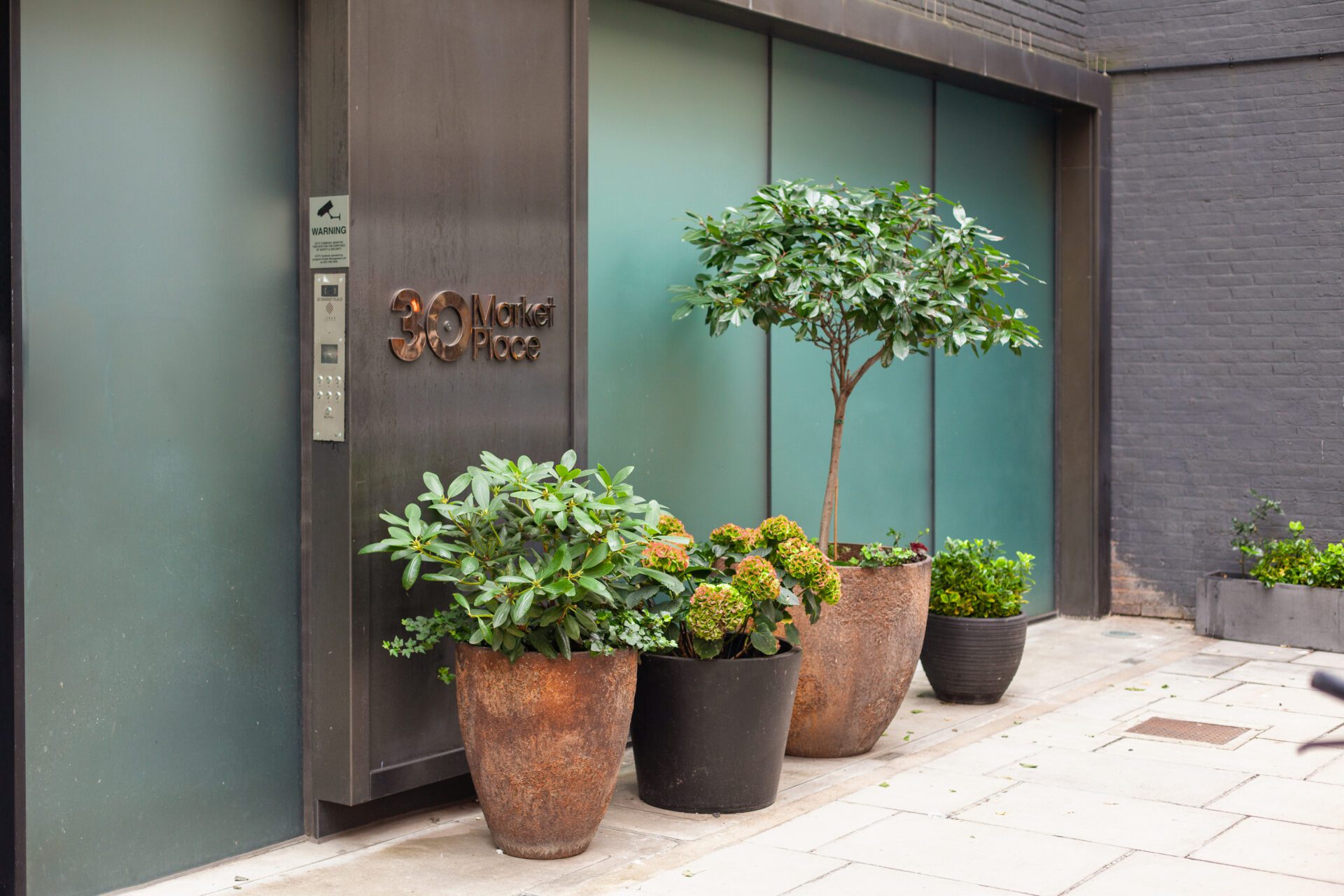
When people think of indoor plants, the first thing that comes to mind is a potted plant placed on a bedroom window. While this is accurate, indoor plants go beyond bedrooms and living rooms to include offices, kitchens and even bathrooms.
So you may ask, what are the best low-maintenance indoor plants?
- Snake Plant (Sansevieria)
- ZZ Plant (Zamioculcas zamiifolia)
- Peace Lily (Spathiphyllum)
- Cast Iron Plant (Aspidistra elatior)
- Chinese Evergreen (Aglaonema)
- Lucky Bamboo (Dracaena sanderiana)
- Jade Plant (Crassula ovata)
- Money Plant (Epipremnum aureum)
- Swedish Ivy – Plectranthus hadiensis
- Lemon Balm (Melissa officinalis)
Don’t leave yet, this guide reveals expert care tips for each plant – from watering schedules to light requirements – ensuring your green companions stay healthy.
What are the best best plants for office?
Before choosing an indoor plant, you should answer the two main questions: What plants do well in low light, and which ones require the least maintenance? Below are five options.
Snake Plant (Sansevieria)
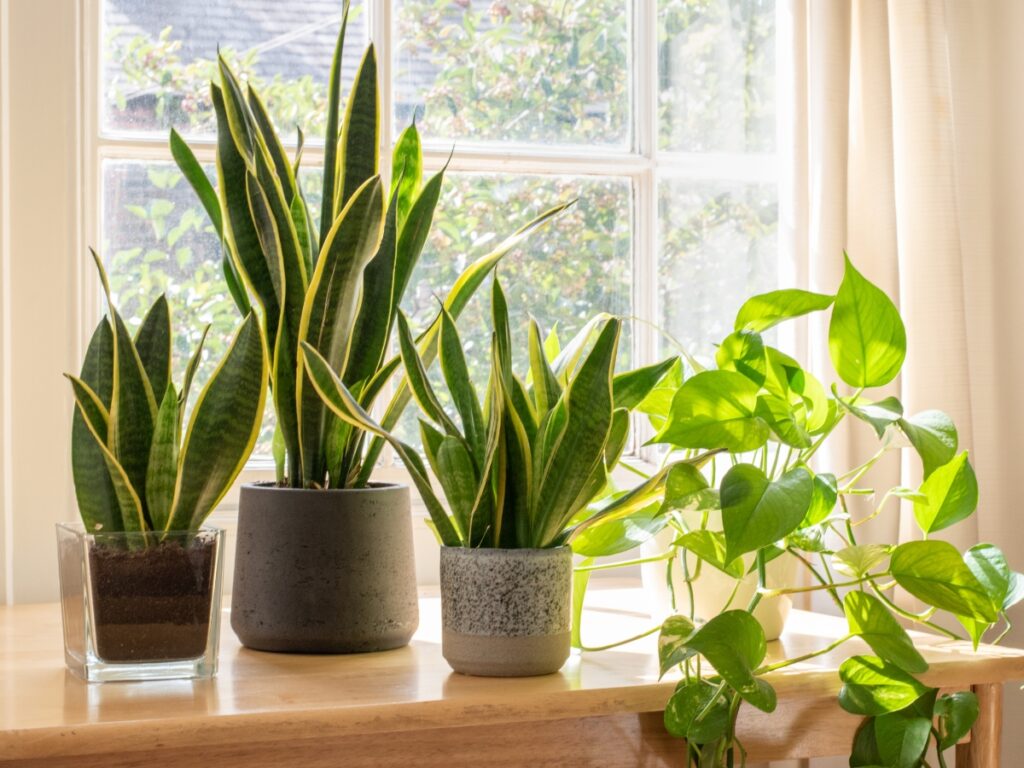
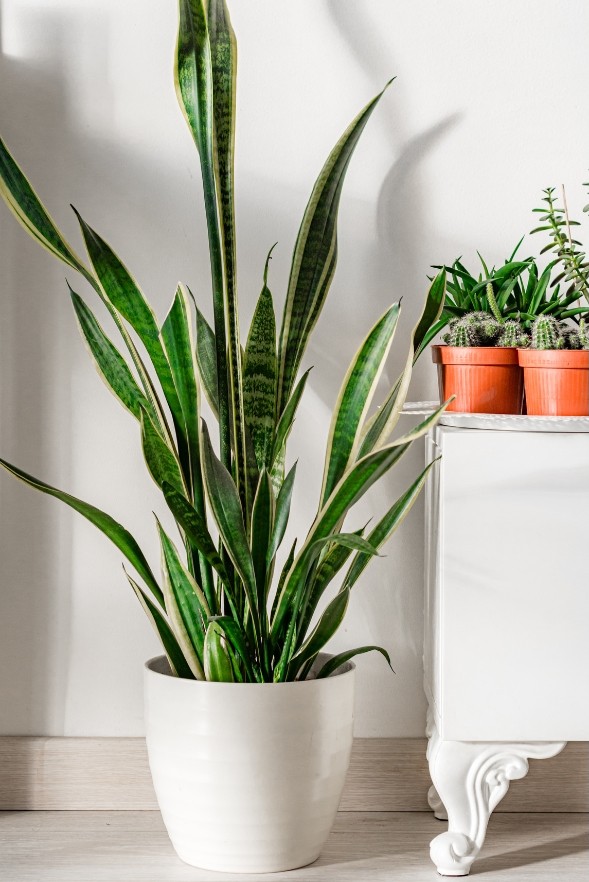
- Required light: Moderate, indirect sunlight.
- How to water: Every 2 to 3 weeks.
- Growth characteristics: Slow growth with a maximum height of around 12 feet.
- Benefits: It adds an element of décor to your home. It also purifies the air by removing toxins like benzene.
- Additional tips: Maintain low humidity around this plant. Place it 8 to 10 feet away from a west or south-facing window.
The snake plant is one of the easiest indoor plants to grow and care for. They are aesthetically appealing and easily accessible.
ZZ Plant (Zamioculcas zamiifolia)
- Required light: Thrives in bright, indirect sunlight.
- How to water: 2 to 3 weeks, but only when the top soils feel dry.
- Growth characteristics: Slow to moderate growth. It may take three to five years to reach a height of 4 feet.
- Benefits: It has air-purifying properties.
- Additional tips: Keep out of reach of children since all parts of the plant are poisonous when chewed or swallowed.
ZZ Plant, also known as aroid palm, is native to forests and dry grassland in Eastern Africa. It is a stemless evergreen that is easy to maintain and is commonly planted in pots in offices and homes.
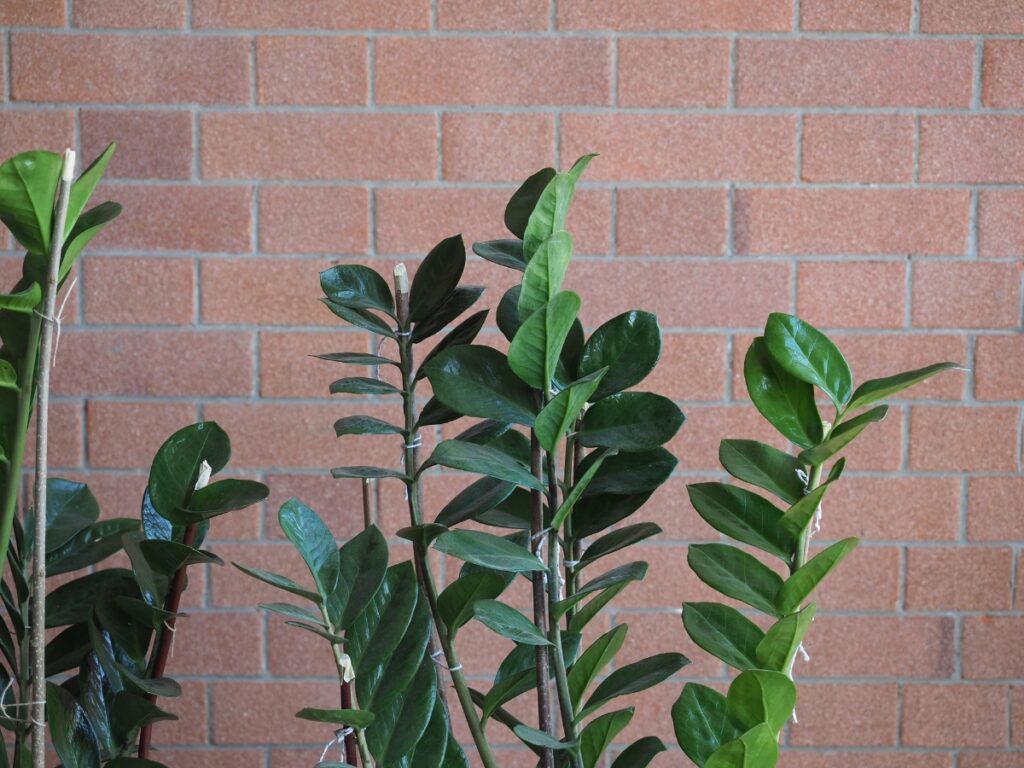
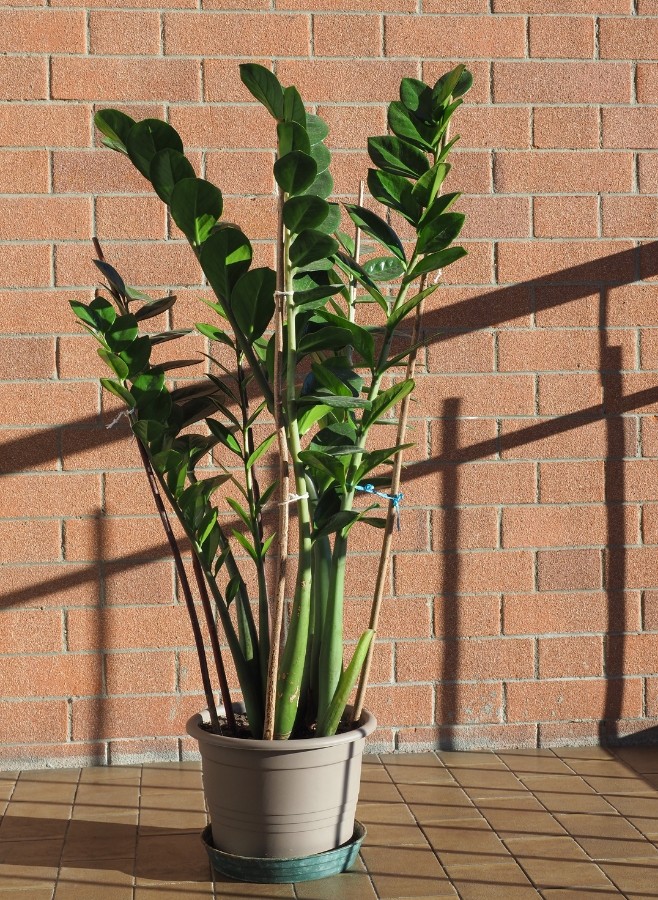
Peace Lily (Spathiphyllum)
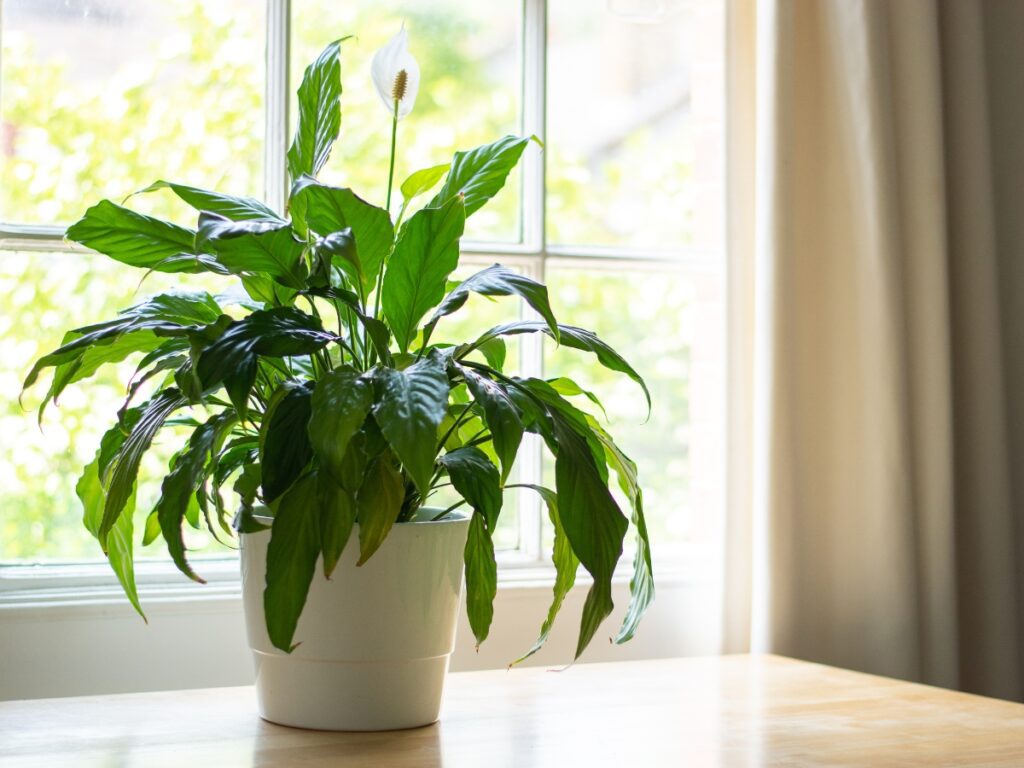
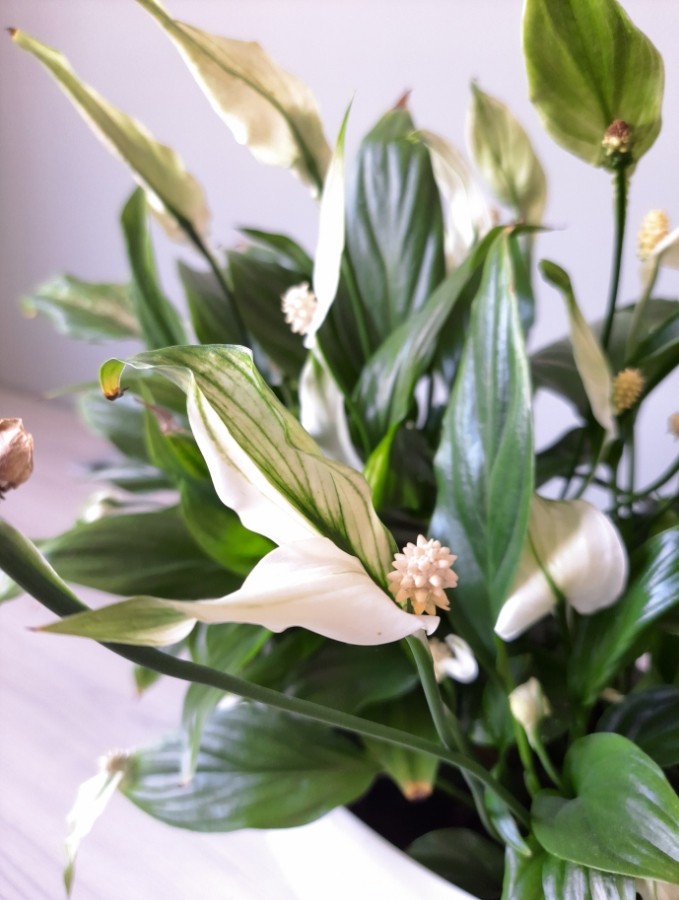
- Required light: Blooms better with bright indirect light.
- How to water: Keep the soil moist but not waterlogged.
- Growth characteristics: It has a typical growth rate of 1 to 6 inches per year, taking around 4 to 5 years to mature fully.
- Benefits: It’s a natural air freshener and reduces mould spores in the air.
- Additional tips: Maintain high humidity levels. Regularly mist the plant and place the pot on a tray with pebbles and water.
Peace lilies are popular indoor plants characterised by their dark and glossy green leaves. The leaves are oval and rise directly from the soil. They are long-lasting, sturdy and easy to grow and maintain.
Cast Iron Plant (Aspidistra elatior)
- Required light: Thrives in minimal light to dark conditions.
- How to water: Drought tolerant. Slightly water it every two to three weeks.
- Growth characteristics: Slow growth. It may take 5+ years to reach 3 feet tall and 2 feet wide.
- Benefits: It purifies the air.
- Additional tips: The cast iron plant is a sign of strength. It’s best for creating green indoor spaces where other plants cannot survive.
As the name suggests, this is one of the plants that are hard to kill indoors. It has long, pointed, evergreen leaves that withstand harsh temperatures, smoke, and other conditions.
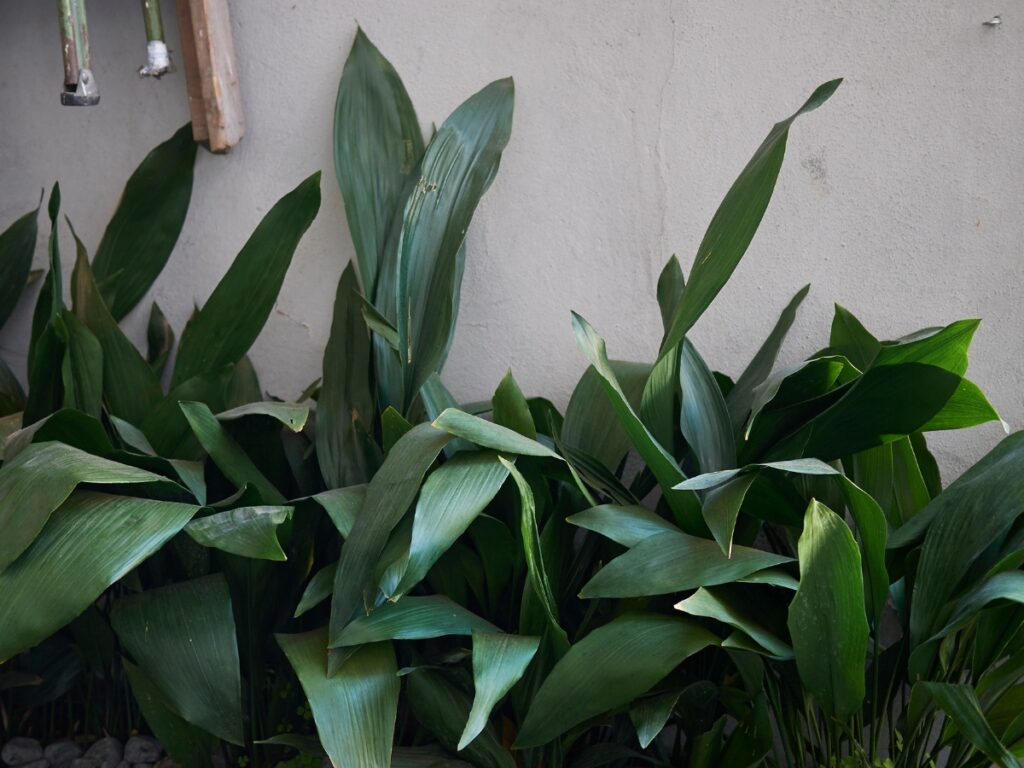
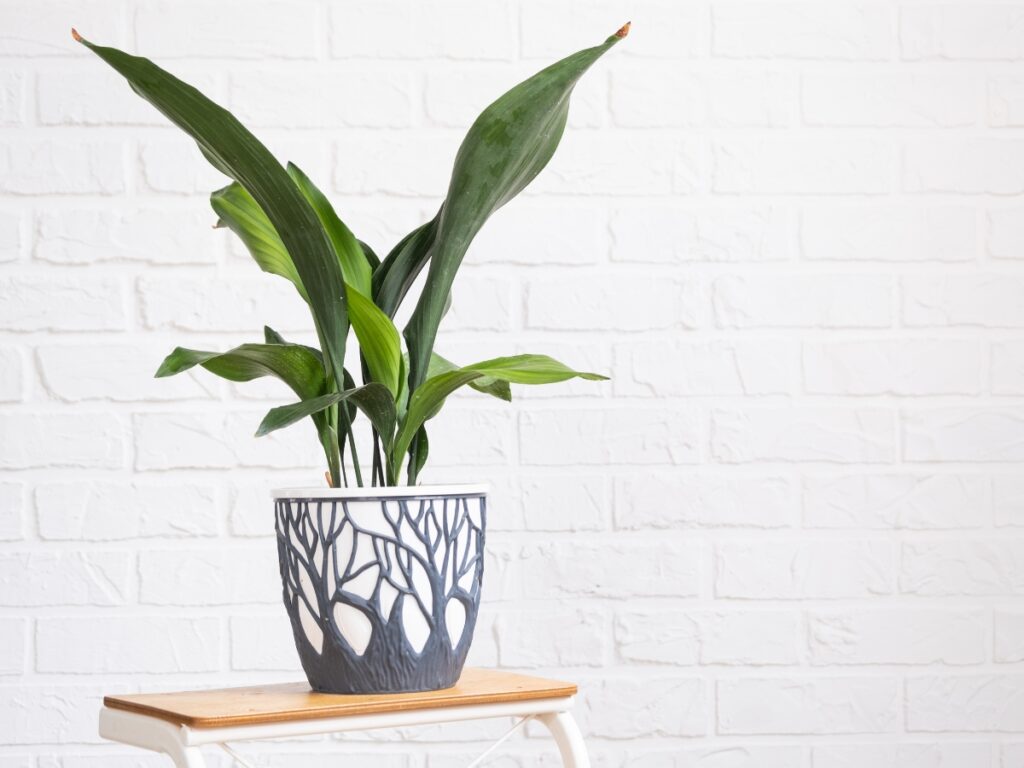
Chinese Evergreen (Aglaonema)
- Required light: Low to medium sunlight. Keep it away from direct light.
- How to water: Maintain moist to slightly dry soil between watering.
- Growth characteristics: Slow growth. It grows from 1 to 3 feet tall and up to 3 feet wide.
- Benefits: It has a high ornamental value thanks to its variegated leaves.
- Additional tips: The plant prefers high humidity. Trim off any damaged leaves regularly.
The Chinese evergreen is one of the most durable houseplants that can tolerate poor light, dry air, and drought.
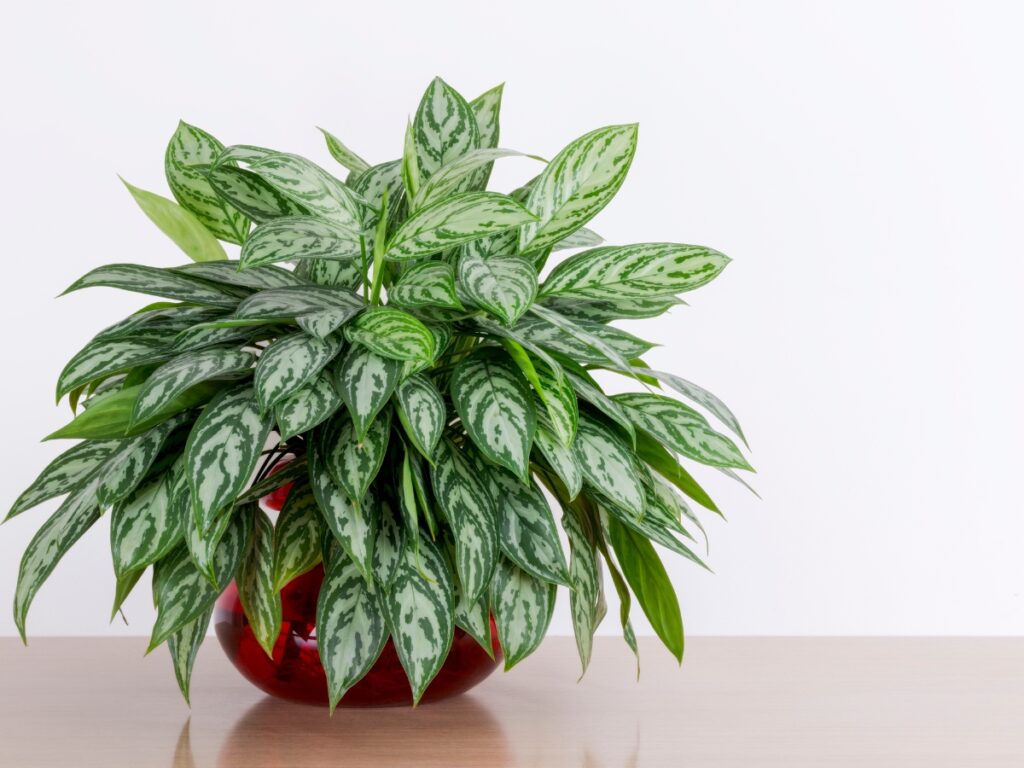
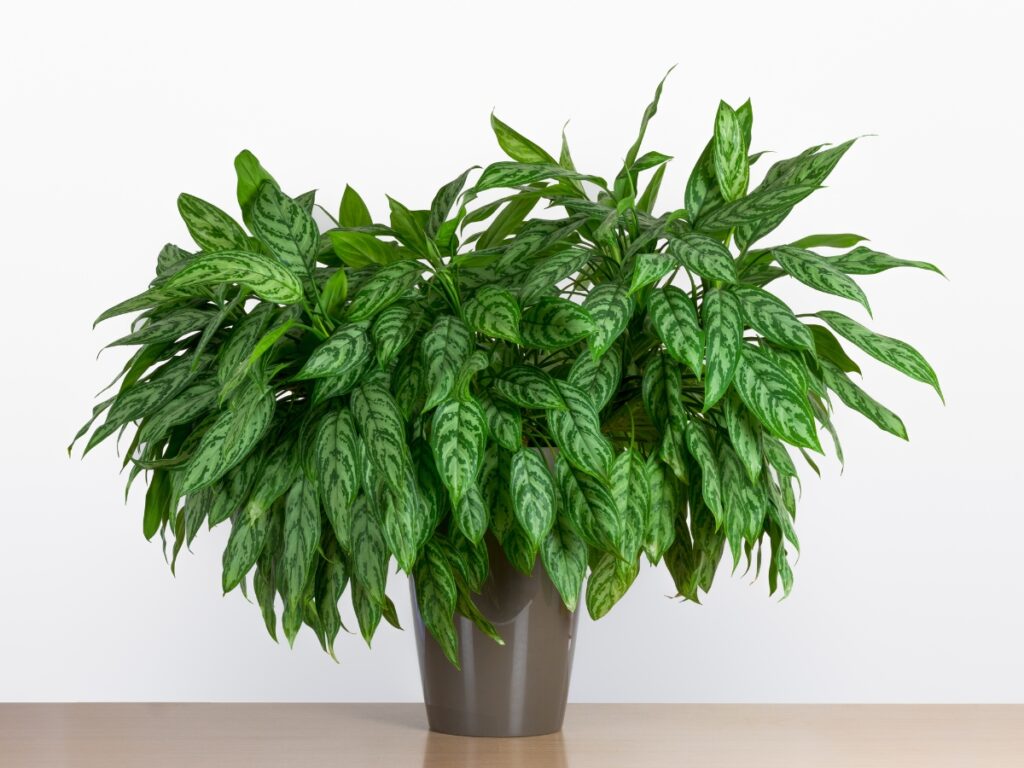
Lucky plants for office desks
Besides the low-maintenance indoor plants discussed above, some plants are believed to bring luck and good energy. According to Feng Shui, an ancient Chinese philosophy, human life deeply connects to the environment. The first rule of Feng Chui is to keep a decluttered space that allows for free energy flow.
This philosophy also suggests using specific plants that exude good luck and vibrant life force. Feng Shui lucky plants must be placed in the right spots to enhance positive energy, attracting fortune, wealth and growth. These plants include:
Lucky Bamboo (Dracaena sanderiana)
- Required light: Bright but indirect light source.
- How to water: Every 7 to 10 days.
- Growth characteristics: Slow growth. It can grow up to 5 feet tall and 2 feet wide.
- Benefits: Purifies air and enhances ambience.
- Additional tips: Keep it away from direct sunlight.
Lucky bamboo is a popular Feng Shui plant that helps boost positive energy. It often makes for a good corporate gift.
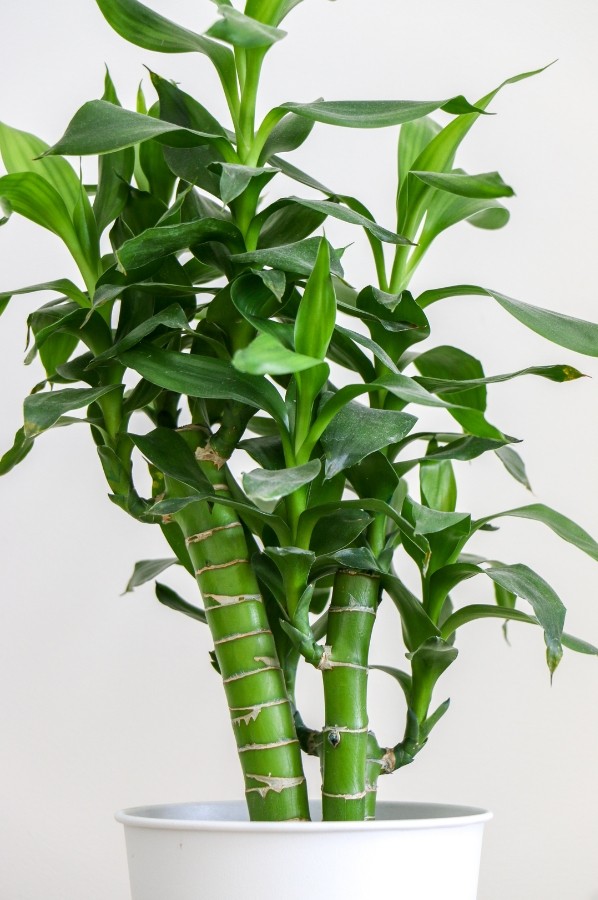
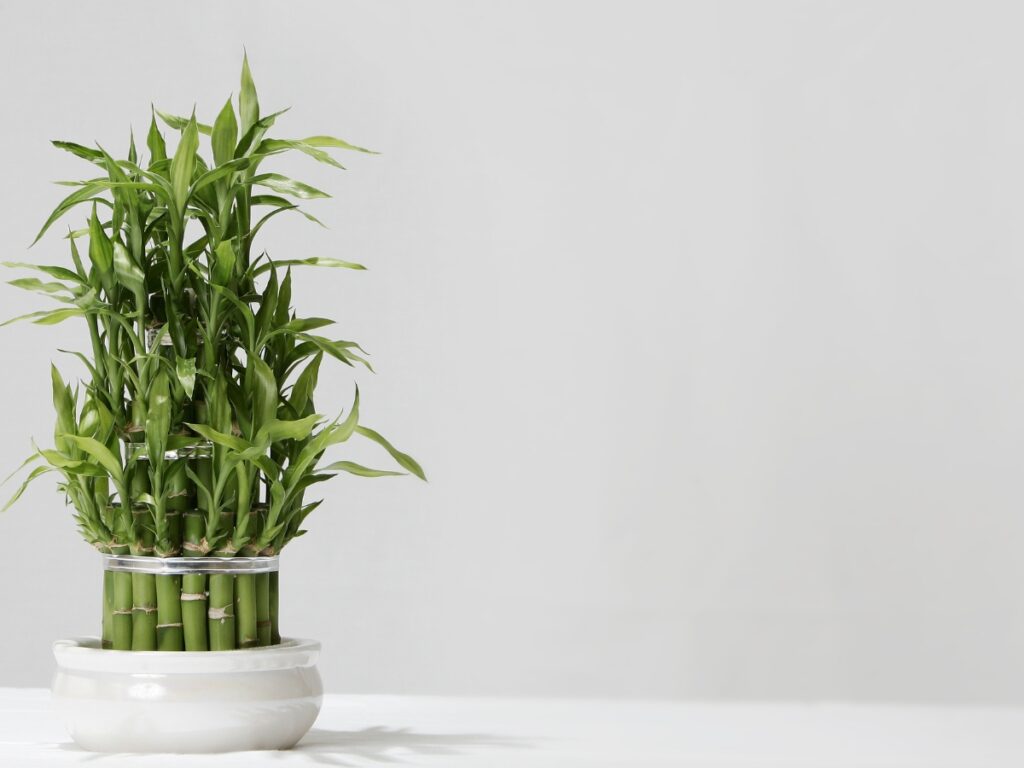
Jade Plant (Crassula ovata)
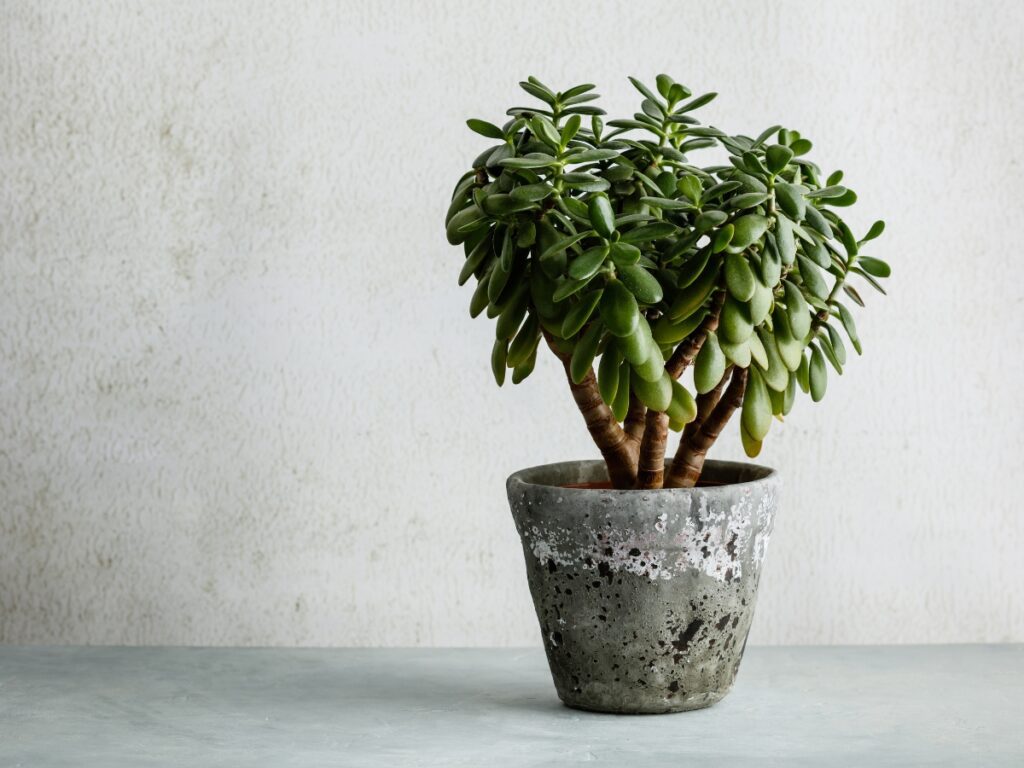
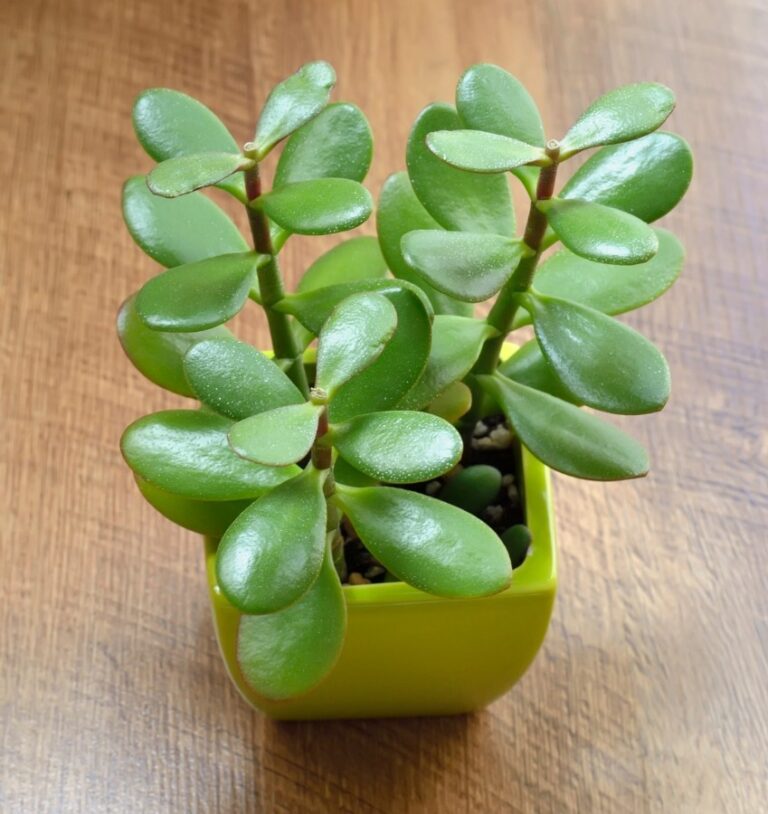
- Required light: Prefers bright yet indirect sunlight.
- How to water: Every 2 to 3 weeks.
- Growth characteristics: Can grow up to six feet tall but gains only 2 inches per year.
- Benefits: Low maintenance. It has high longevity.
- Additional tips: Keep this plant in the southeast corner of your office.
This is an easy-to-grow front-door plant believed to attract good fortune and success.
Money Plant (Epipremnum aureum)
- Required light: Medium to bright indirect sunlight.
- How to water: Regular watering, once weekly.
- Growth characteristics: Grows up to around 20 to 40 inches tall.
- Benefits: It purifies the air and increases the humidity level.
- Additional tips: This plant requires high humidity. Place it on your office table or working desk.
The Chinese Money Plant is a pet-friendly indoor plant. In the Feng Shui philosophy, it’s known to attract prosperity and good luck.
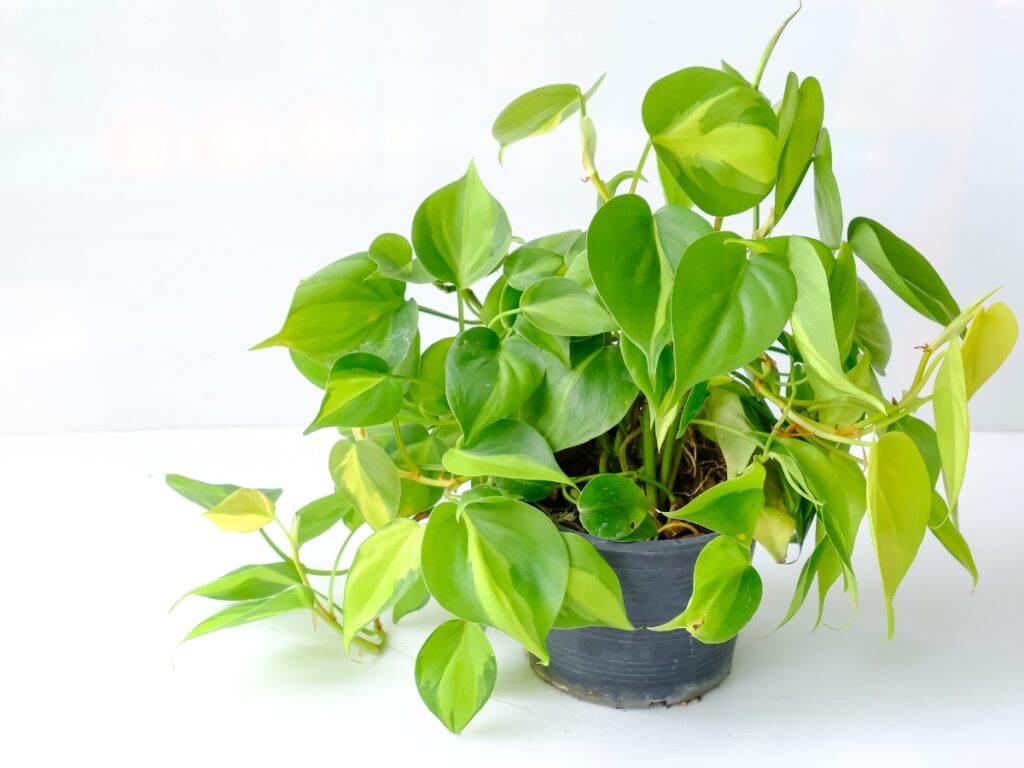
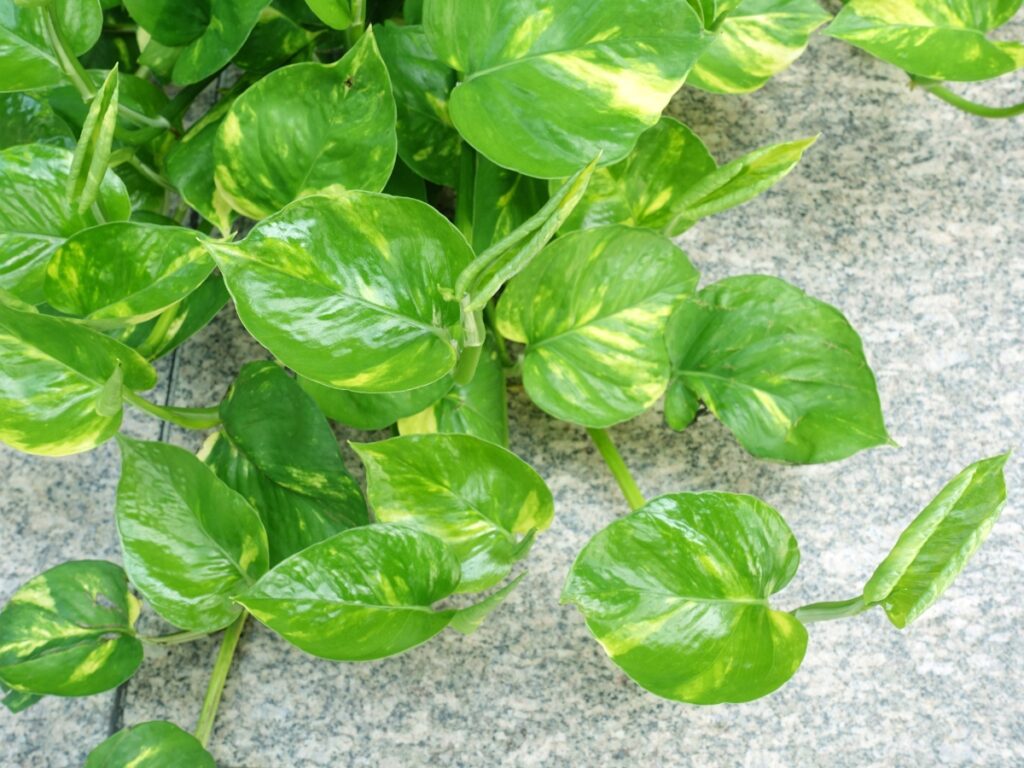
Aromatic small plants for office desks
The indoor plants below are small enough to fit on your office desk and also have a good scent to keep the workspace smelling nice and fresh.
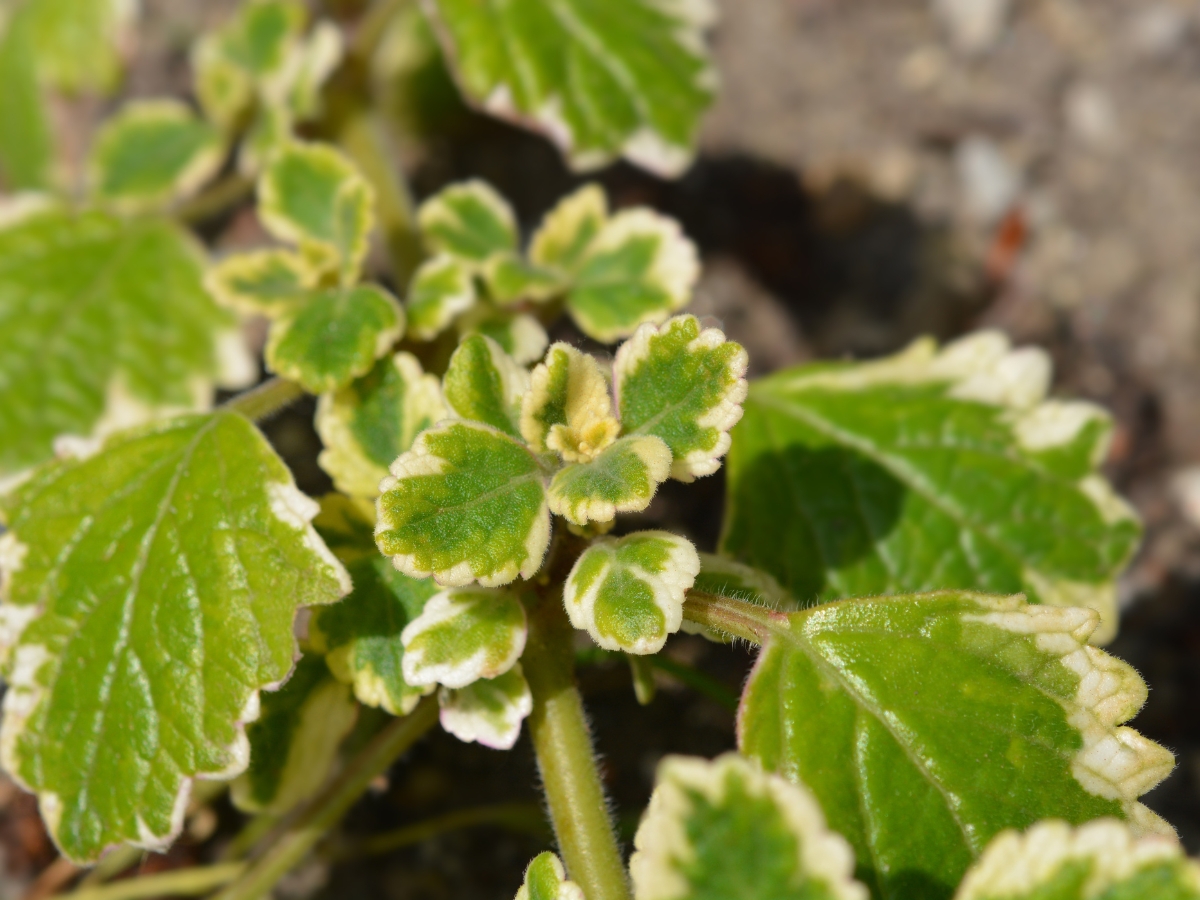
Swedish Ivy - Plectranthus hadiensis
- Required light: Moderate to low indirect sunlight.
- How to water: once every 1 to 2 weeks.
- Growth characteristics: It is fast-growing and has trailing habits. It can reach 2 to 3 feet tall.
- Benefits: Low maintenance and helps purify the air.
- Additional tips: Give enough bright light to produce purple or white tubular-shaped flowers.
This is an indoor tender perennial related to the mint plant. The plant often appears very full and attractive.
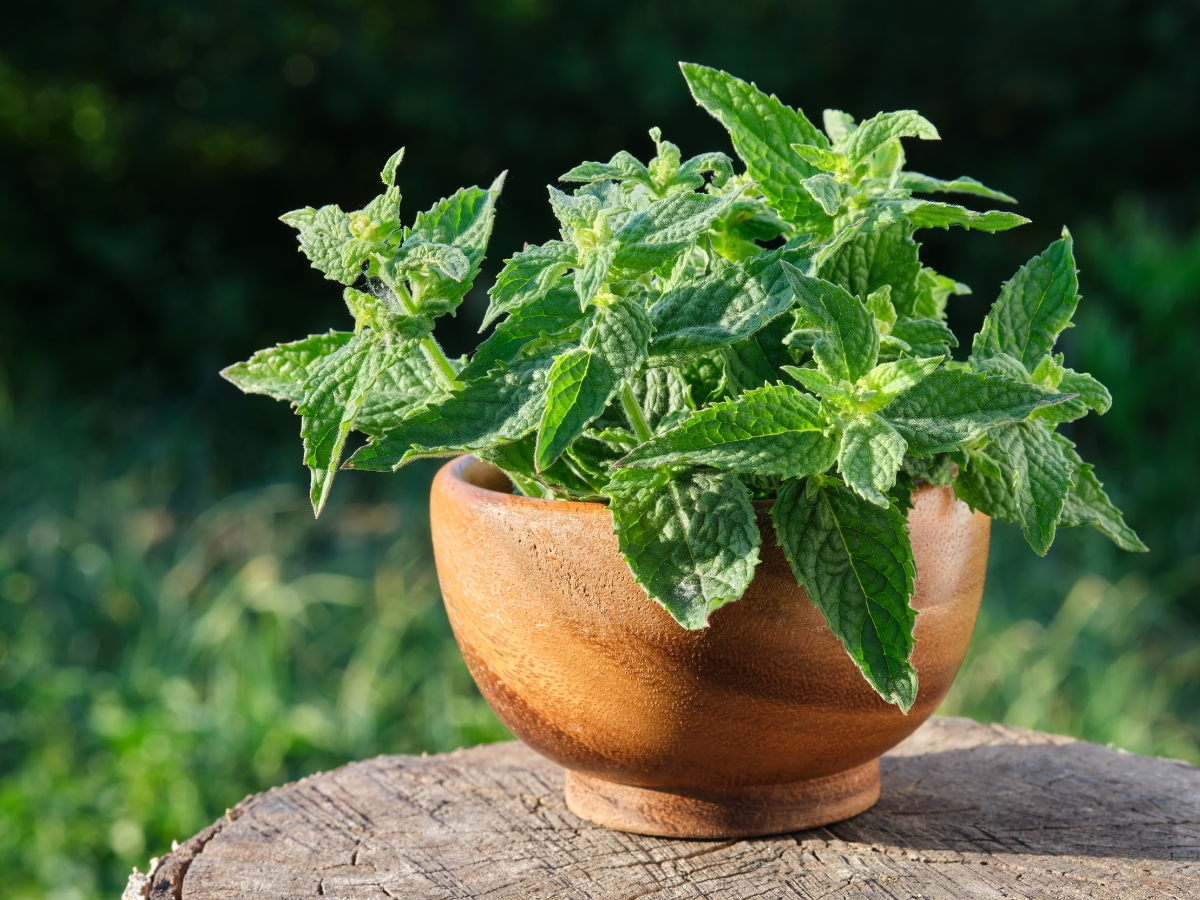
Lemon Balm (Melissa officinalis)
- Required light: Bright indirect sunlight. Place in near south-west facing window.
- How to water: Prefers moist soil. So water it once weekly.
- Growth characteristics: Vigorous. Can grow up to 2 feet tall.
- Benefits: It is a known antioxidant used to relieve digestive issues.
- Additional tips: Place the plant with proper air circulation to prevent powdery mildew.
This plant features oval-shaped leaves and has a scent of fresh citrus. It is relatively small and adaptable to several indoor environments.
Looking for new office space in central of London?
At The Langham Estate, we offer more than just offices – we curate spaces that celebrate your business’s unique identity.
At The Langham Estate, we offer more than just offices – we curate spaces that celebrate your business’s unique identity.